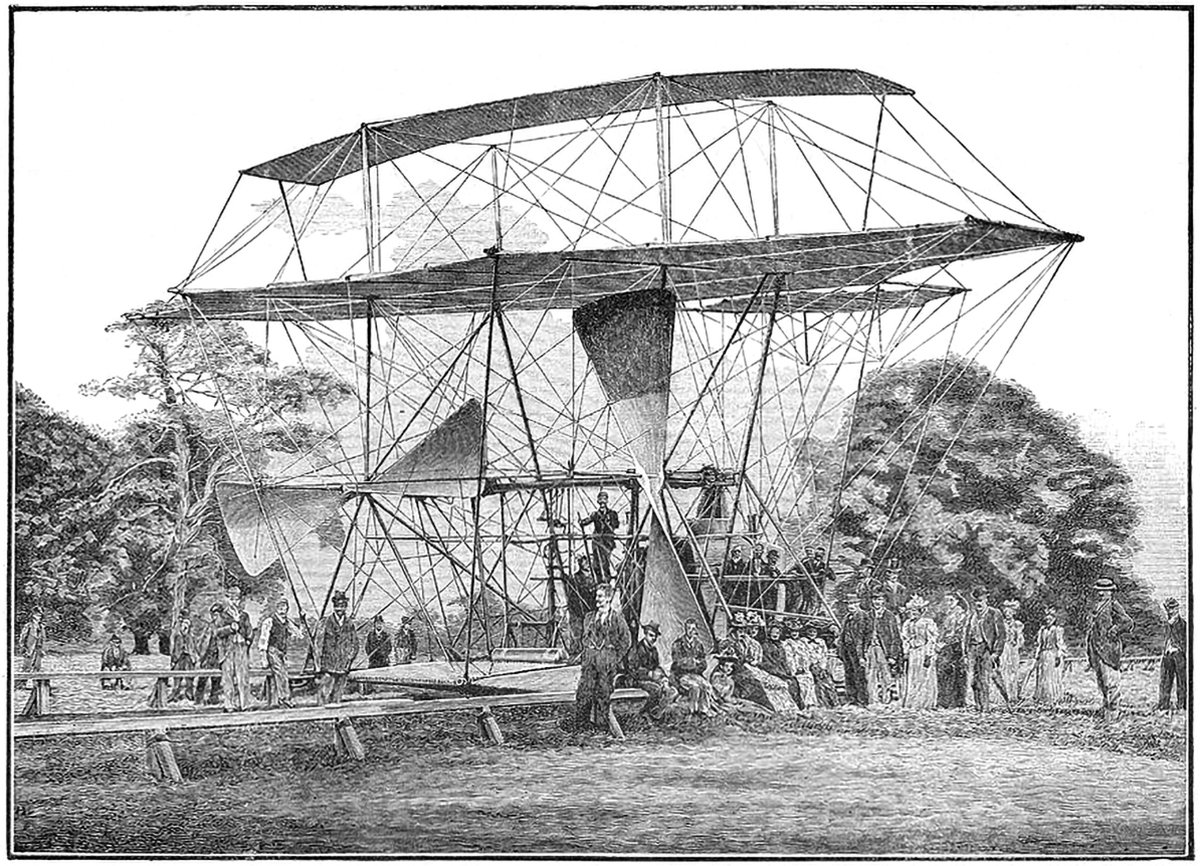Hiram Maxim’s Flying Machines
Hiram Maxim’s first flying machine, circa 1890. The machine was built to run along two tracks in order to control its movement. It did achieve liftoff along the tracks, but was constrained by a safety track so it didn’t exactly achieve free flight.
Hiram Maxim was a prolific inventor who is best known as the inventor of the first automatic machine gun, as well as a series of flying machines he built and tested between 1889 and 1894. Pictured above is one of his later designs. It consisted of a series of wings tied together with a web of struts and cables, powered by a pair of massive wooden propellers. Maxim designed the machine to run along a track on the ground, which would prevent it from taking off. The first version of the design, pictured below, ran along a pair of rails, like a train. These rails proved insufficient to hold the craft down, so Maxim upgraded to the design shown above, with a pair of wood outriggers in addition to the central rails.
Maxim considered the machine a test rig, which is why he prevented it from lifting off the ground. The design with the outriggers successfully lifted off the ground in 1894, but technically it never flew because the test run was stopped to prevent any damage to the machine. Unfortunately, Maxim abandoned the project shortly thereafter.
Hiram Maxim’s 1893 flying machine, with five pairs of wings. The machine was meant to run along tracks to gain speed before lifting off. The craft never flew.
It’s curious that Maxim ceased work on his flying machines just after his trials began to find success. One would think this would only fuel his desire to continue. He did remark that a feasible flying machine would need stronger engines than he was using, but this doesn’t explain why he quit altogether. Regardless, his elaborate designs proudly take their place in the history of early flight, and the fact that his machine could fly is testament to his abilities as an inventor.
Read more about other ideas for flying machines here.


